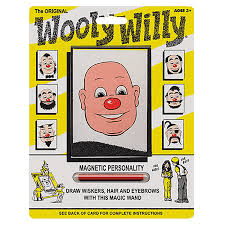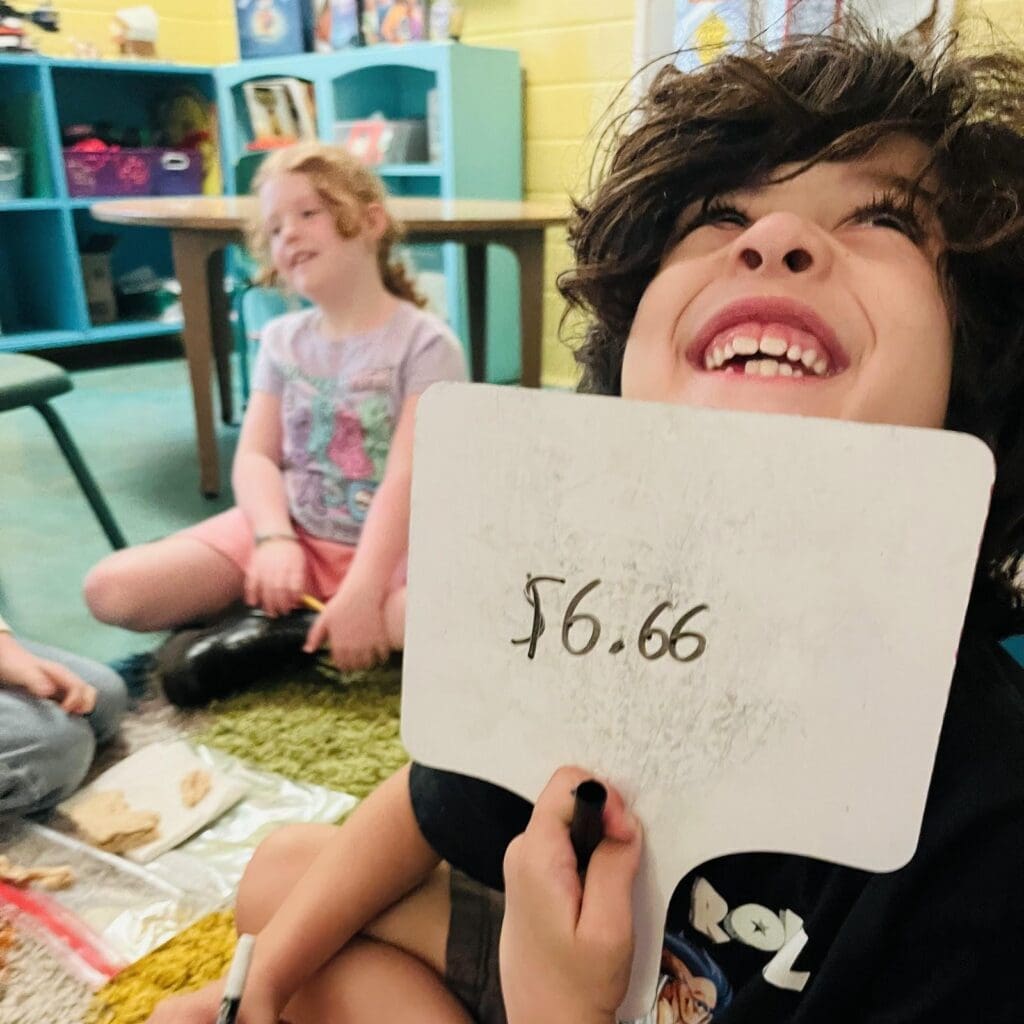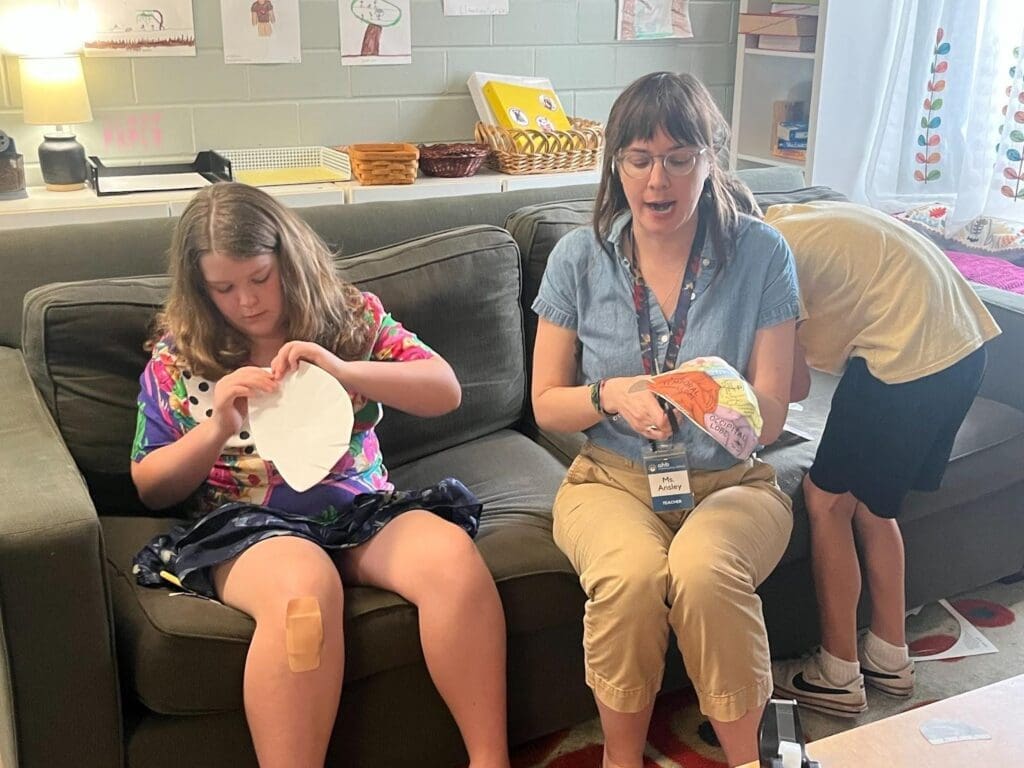Math –
Ms. Andrea’s math group practiced skip counting by 100s (forwards, backwards and mentally),, compared SO many numbers! We used our <, > & = symbols, and practiced reading inequality sentences. . We built numbers in the hundreds and thousands using place value blocks and played a riveting game of I Have, Who Has matching place value block cards to cards with the same number written in standard form. Next we learned a new game in which we compared two numbers written in expanded form. Everyone agreed that it’s easier to compare numbers when they’re stretched out because you can more clearly see the difference in place value. Thursday we compared numbers in the thousands and boy, these kids have it down! We also played a couple of rounds of Spin to 1,000! In our spare time we worked on some special math challenges and brain teasers.
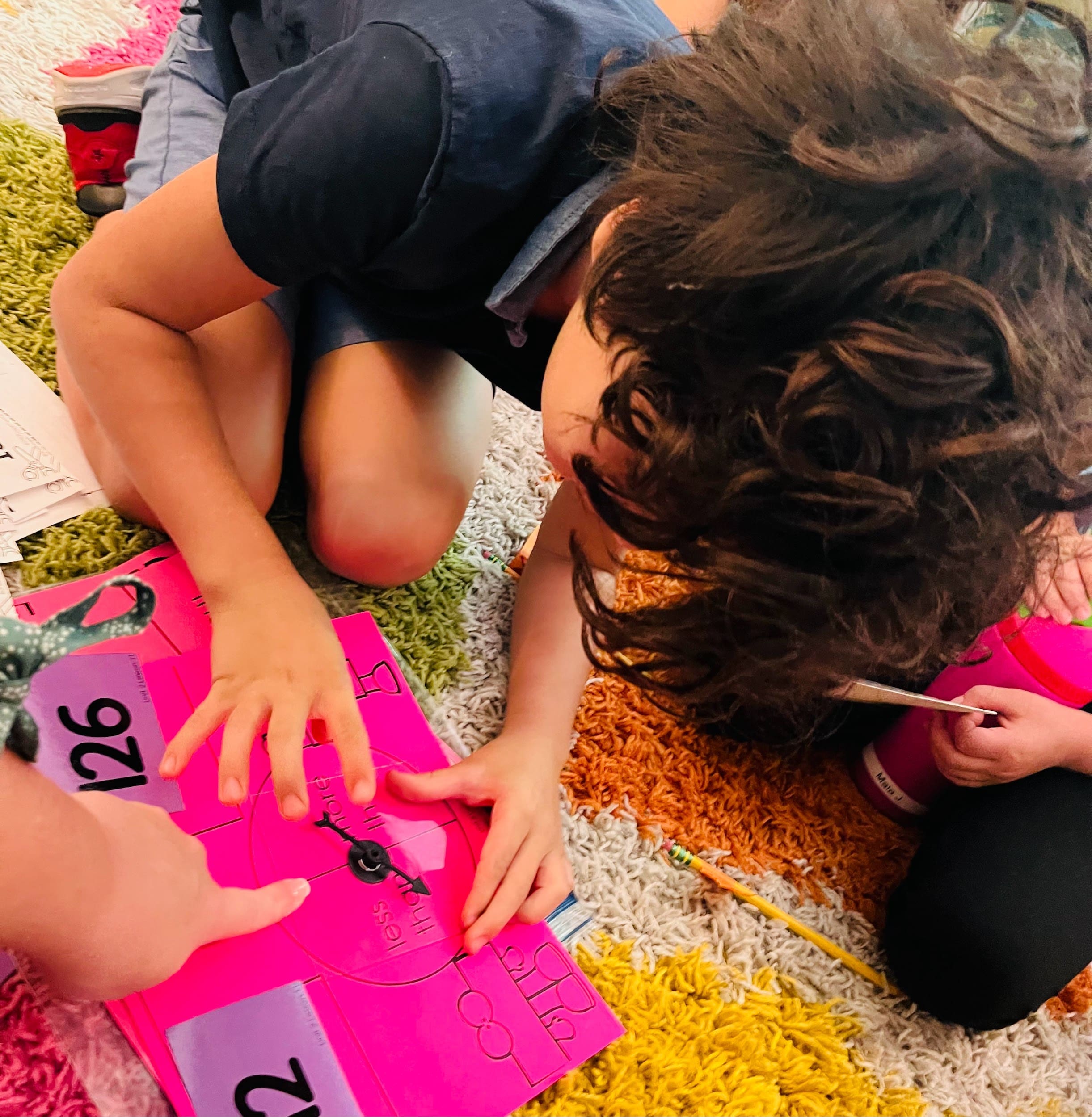 | 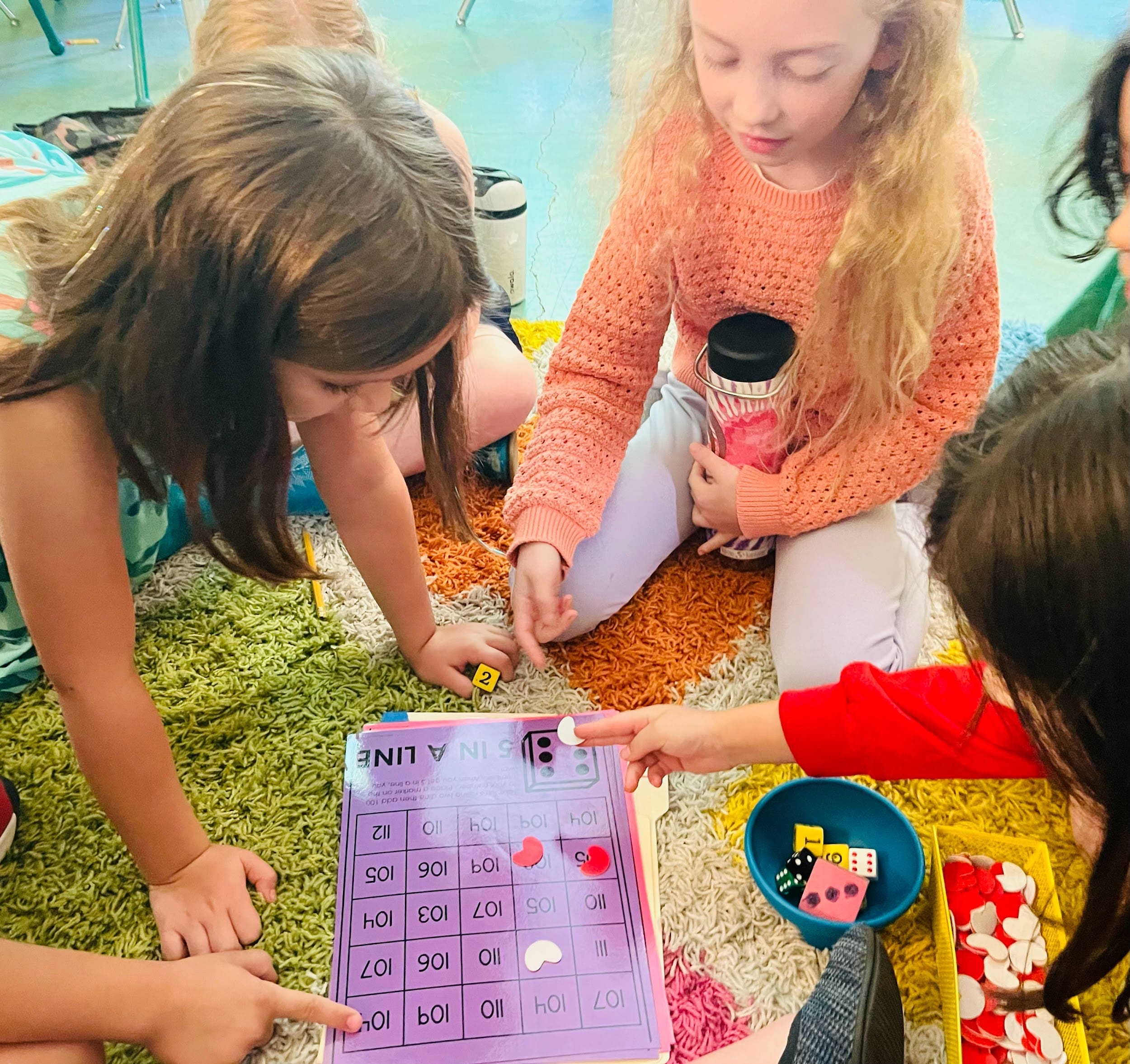 | 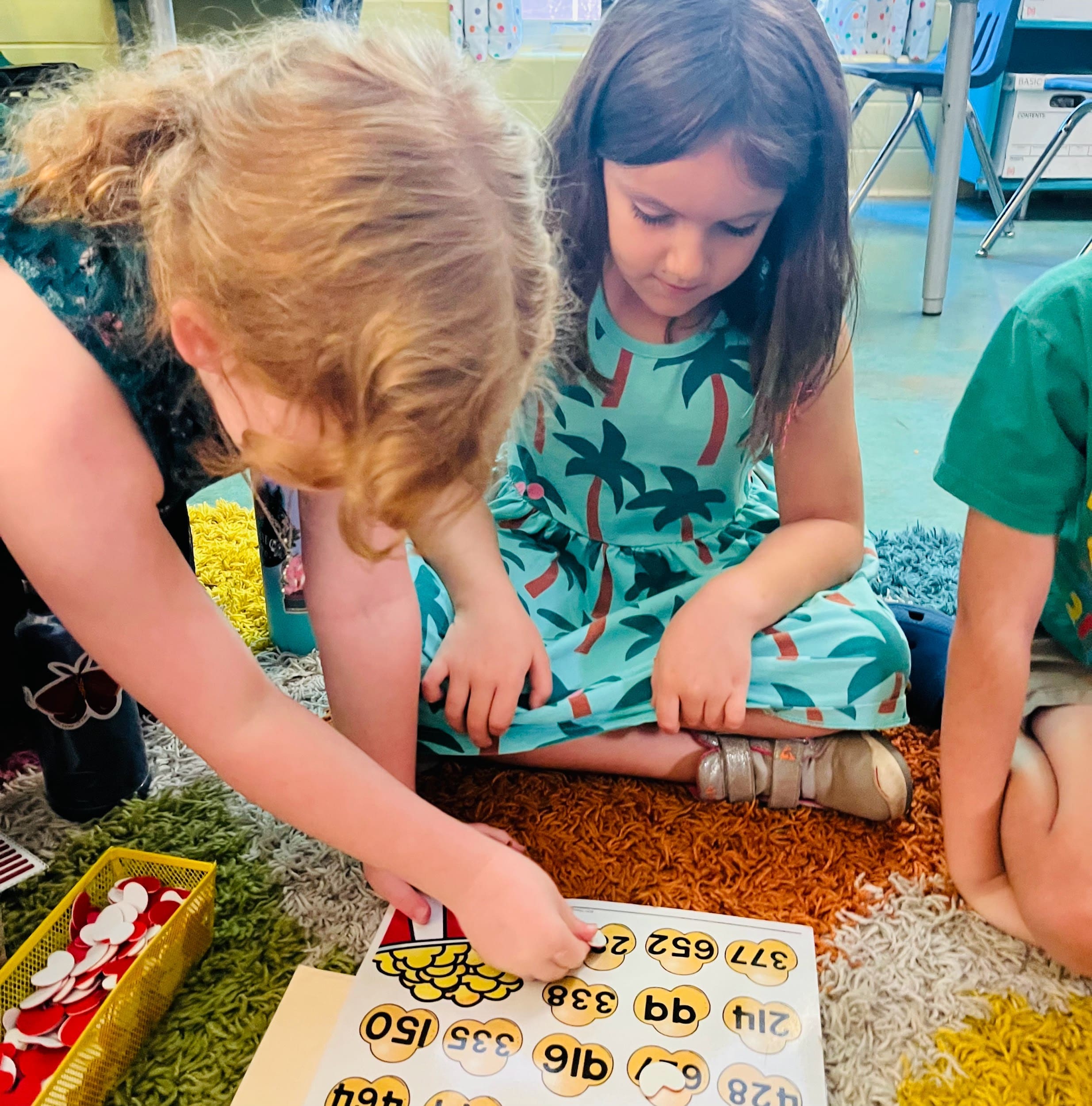 |
|---|
Ms. Kelly’s math group began the week jumping into an easy concept with tough words!- Commutative Property! Commutative property of addition means that changing the order of addends does not change the sum. For example, 4 + 2 = 2 + 4 . And we can use that for really big numbers too. We decided it’s just a fancy mathematical name for “fact family”. The commutative property comes in handy too when we begin multiplication! 😉
Our hard work is paying off! We have a word problem every. single. day. Word problems are really tricky. One of the biggest challenges in word problem-solving is getting students to understand that the written story on the page represents a math story, and that the math story can be translated into an equation. Making this connection is a key part of early mathematical sense-making. It helps students begin to understand that math isn’t just about numbers on a page, but a way of representing relationships in the world. And it’s one of the ways that kids learn to unite conceptual understanding of problems with the procedures they will need to solve them. Exploring together the “math language” in a given word problem, how to devise a plan of attack for a problem, and how to recognize different problem types is key to success. And these guys are killing it!
We tackled a second property for addition midweek- the Associative Property! In the associative property of addition, changing the grouping of addends does not change the sum. For example, ( 2 + 3 ) + 4 = 2 + ( 3 + 4 ). But of course we used bigger numbers! We learned when you see those parentheses you add the numbers in between first. We all felt like the big middle schoolers doing the really tough math! 😉
We ended the week with games and challenges! Before we review subtraction with regrouping next week we had one more practice with addition- board game style! We had so much fun that time flew by and we didn’t even realize we were getting extra practice! Some kiddos also began a new addition and subtraction challenge that we will highlight more on next week when everyone else has had a chance to begin!
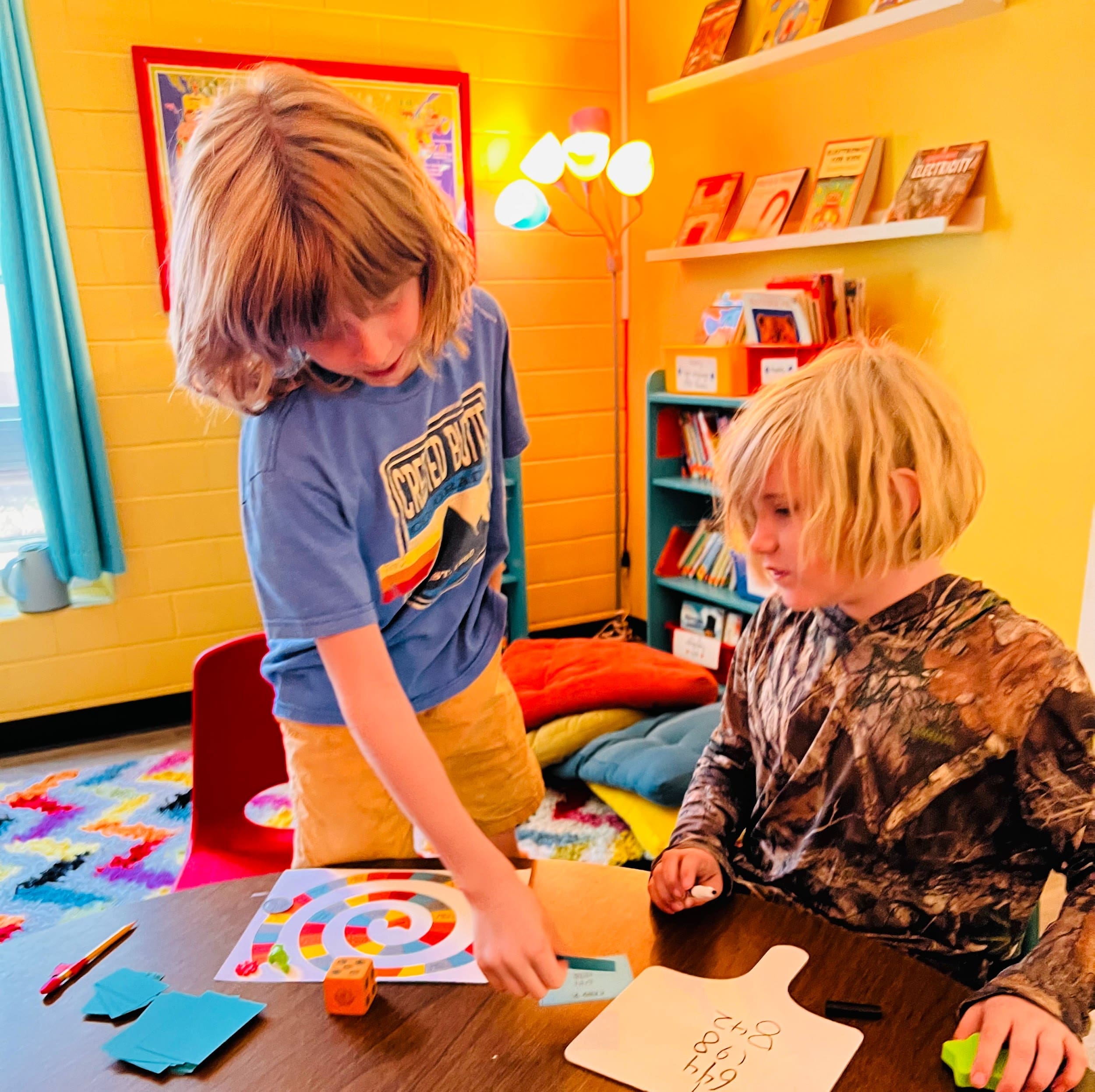 | 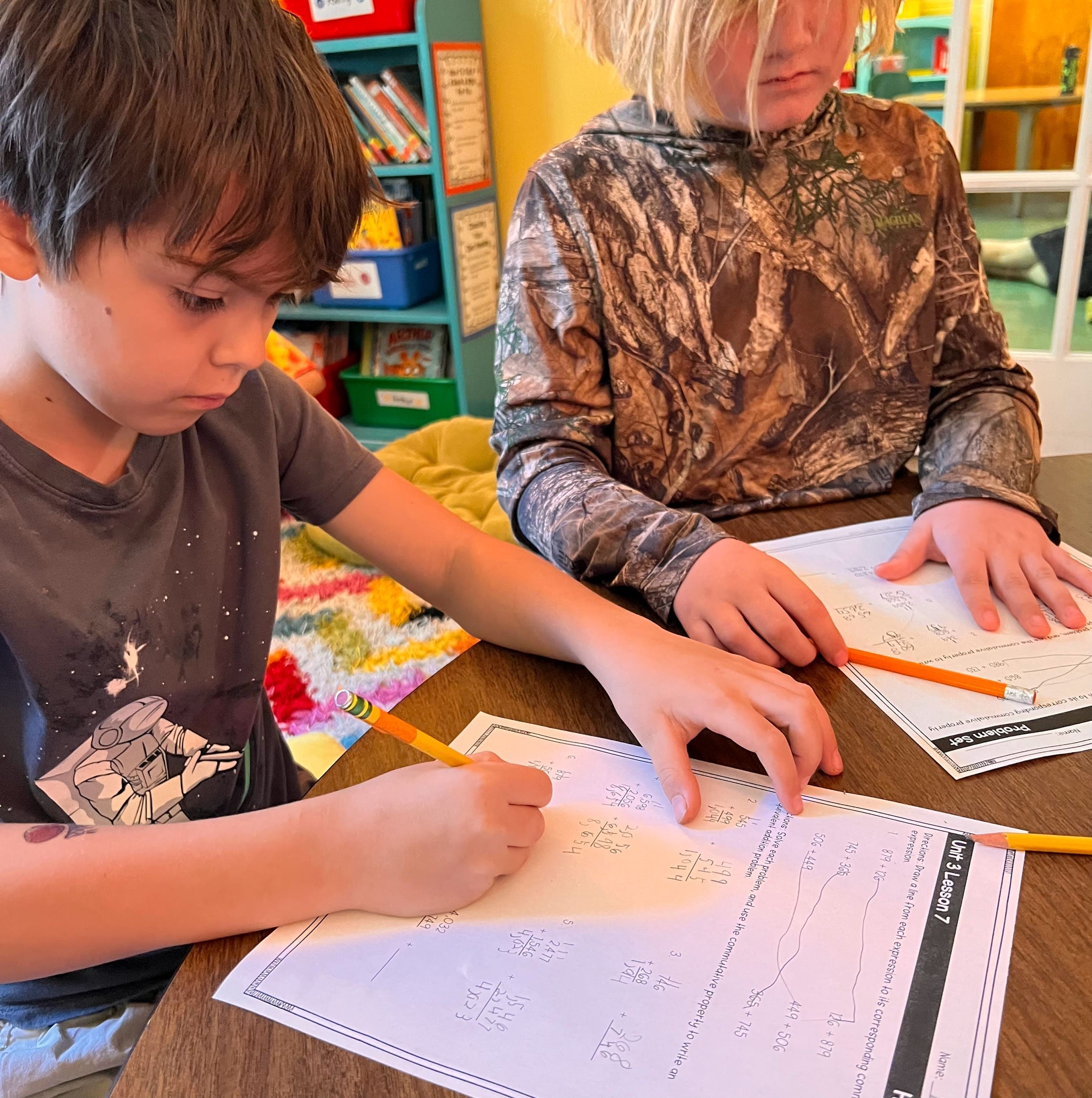 |
|---|
Reading –
Ms. Kelly’s reading group focused on suffixes this week, beginning with the suffix -s and -es. We learned that a suffix is a letter or a group of letters that we add to the end of a base word, and a suffix changes the meaning of the word. In this case -s means “more than one”.
Later in the week we explored two more suffixes. The suffix -ing and -ed. We know that suffixes change the meaning of a base word and in this case, when we tack on an -ing it means the word is “happening right now”. And if you tack on an -ed to a base word it now means it “happened in the past”. And even crazier- the suffix -ed makes three distinct sounds- (d), (id) & (t)!
Morphology, the study of the internal structure of words, is so important for students because it helps them understand the structure of words and how/why they are formed. This knowledge can help improve their literacy skills- especially in spelling. When kids know that “jump” is a base or root word, and the suffix -ed means it happened in the past, they are more apt to spell the word “jumped” rather than “jumpt”. (If a teacher got a nickel for every spelling of “jumpt”…) English is not a purely phonetic language in its spelling; it is morphophonemic. Meaning plays a big part in how we spell a word.
Of course we had a lot of practice by sorting words with -ed into their three sounds, playing a Connect 4 style game with -ing and -ed words and reading lots of texts with our suffix focus. We also looked for context clues and sequenced series of sentences to make a story make sense. All in preparation for Book Clubs coming next quarter!
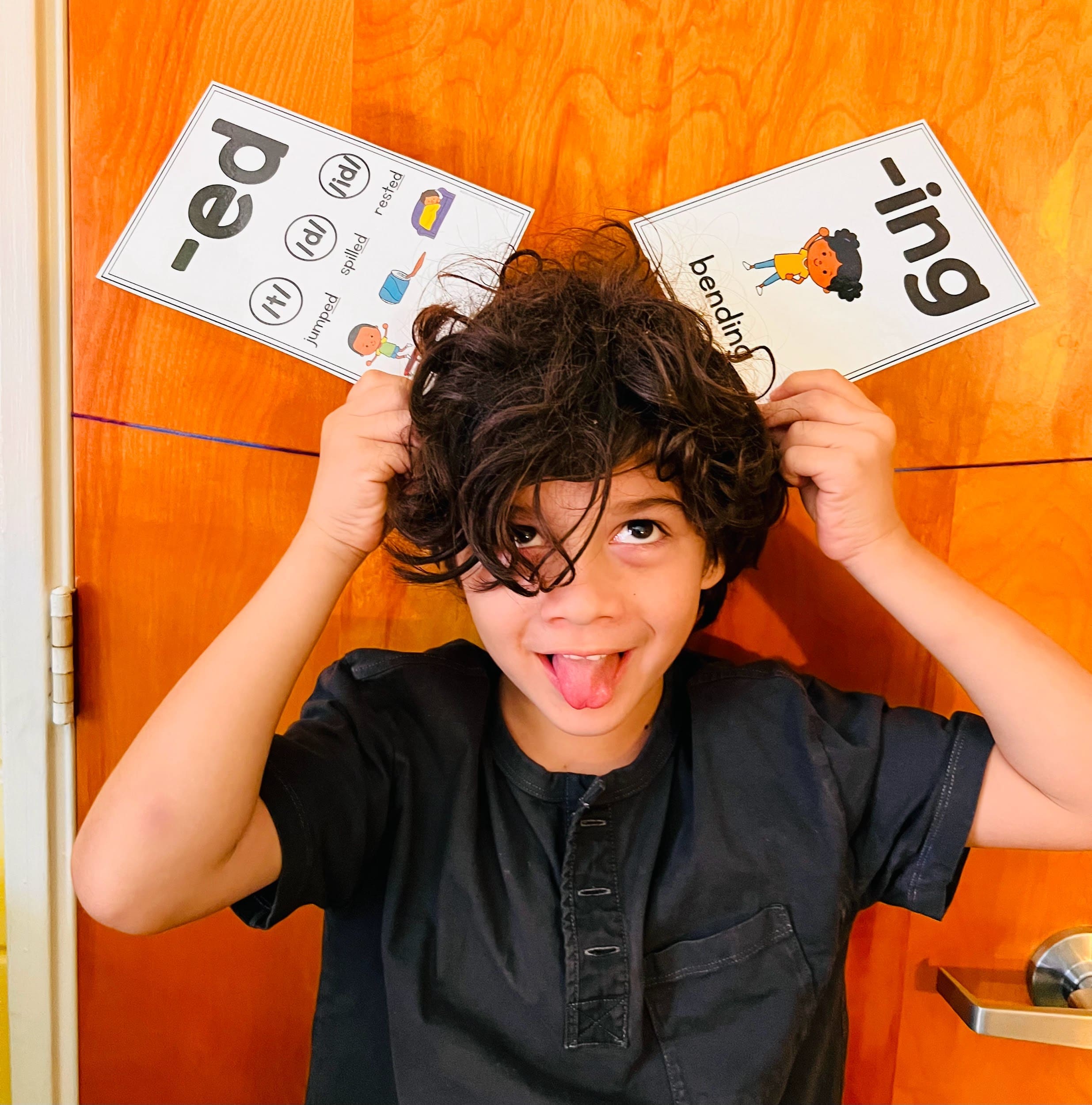 | 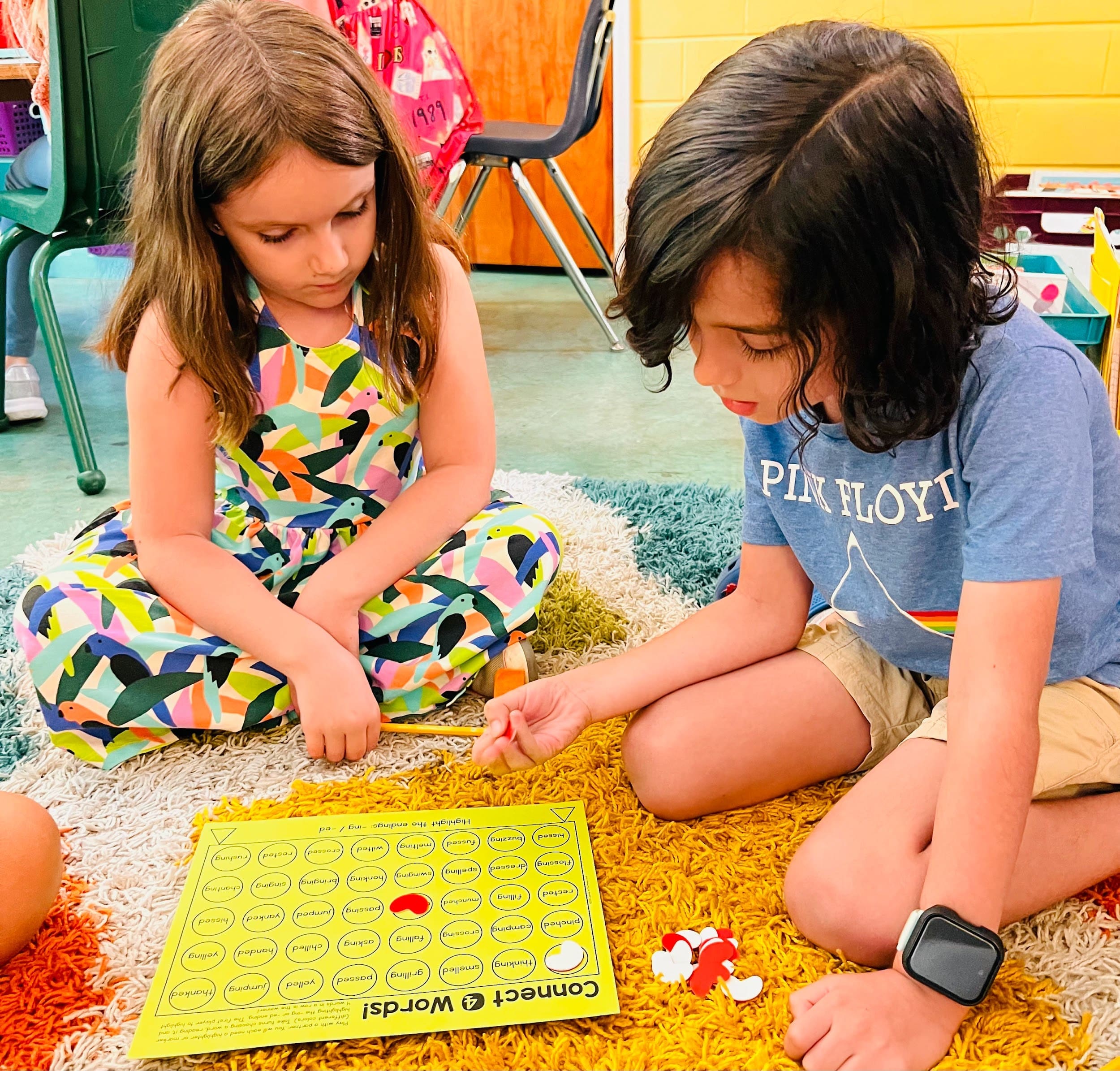 |
|---|
Ms. Andrea’s reading group reviewed digraphs (when two letters partner to make one sound: sh/th/ph, etc.). By popular demand, we broke out our weekly spelling task cards 2 days early! We finished our study of lowercase cursive letters and practiced writing our names and the names of our friends in cursive.
We completed our study of author’s purpose by finding and highlighting evidence in an article, and using our evidence to answer questions about the author’s purpose. Then we wrote paragraphs while expressing a purpose of our own choosing. Everyone did great on our culmination quiz and got time for free reading.
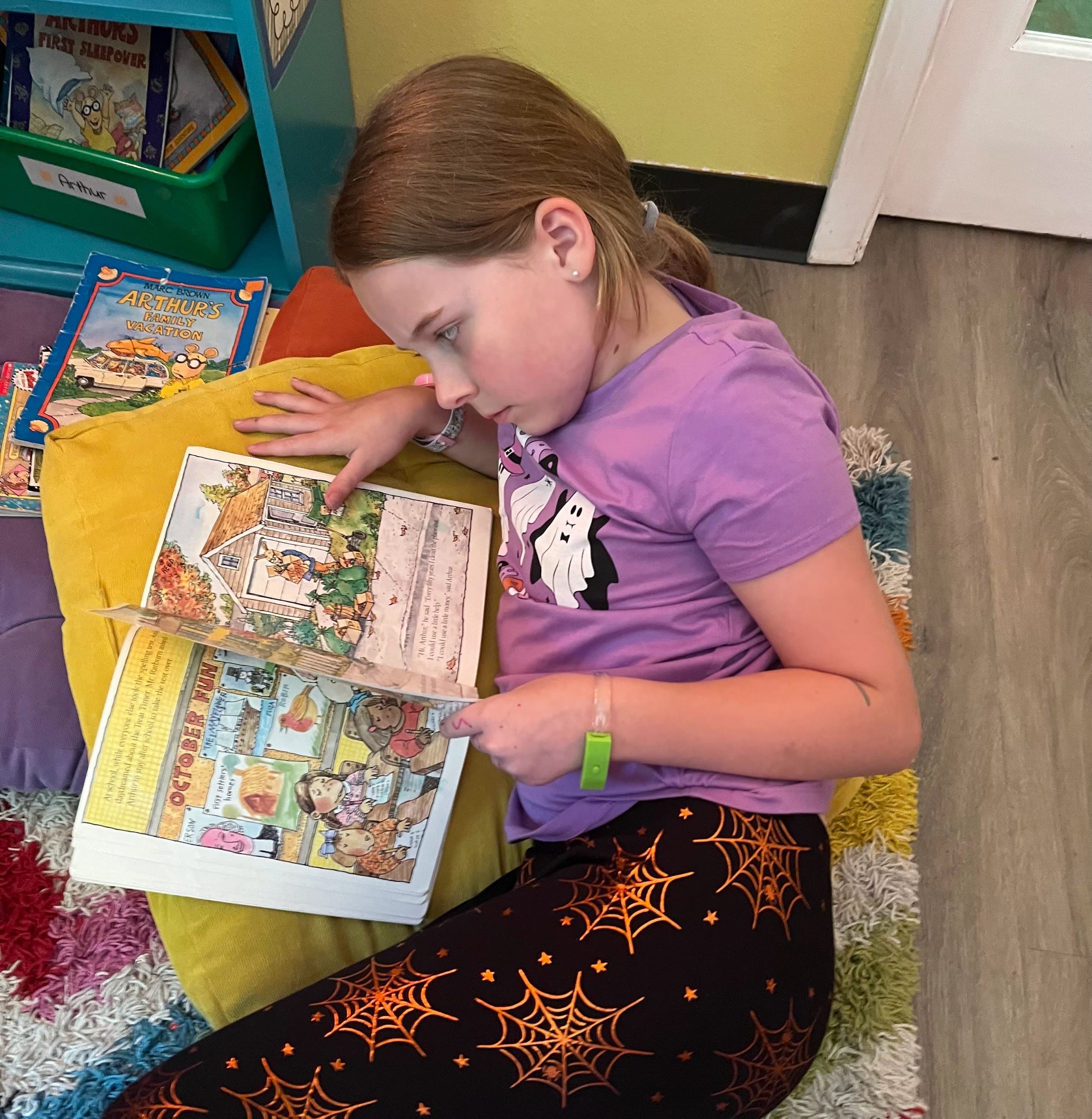 | 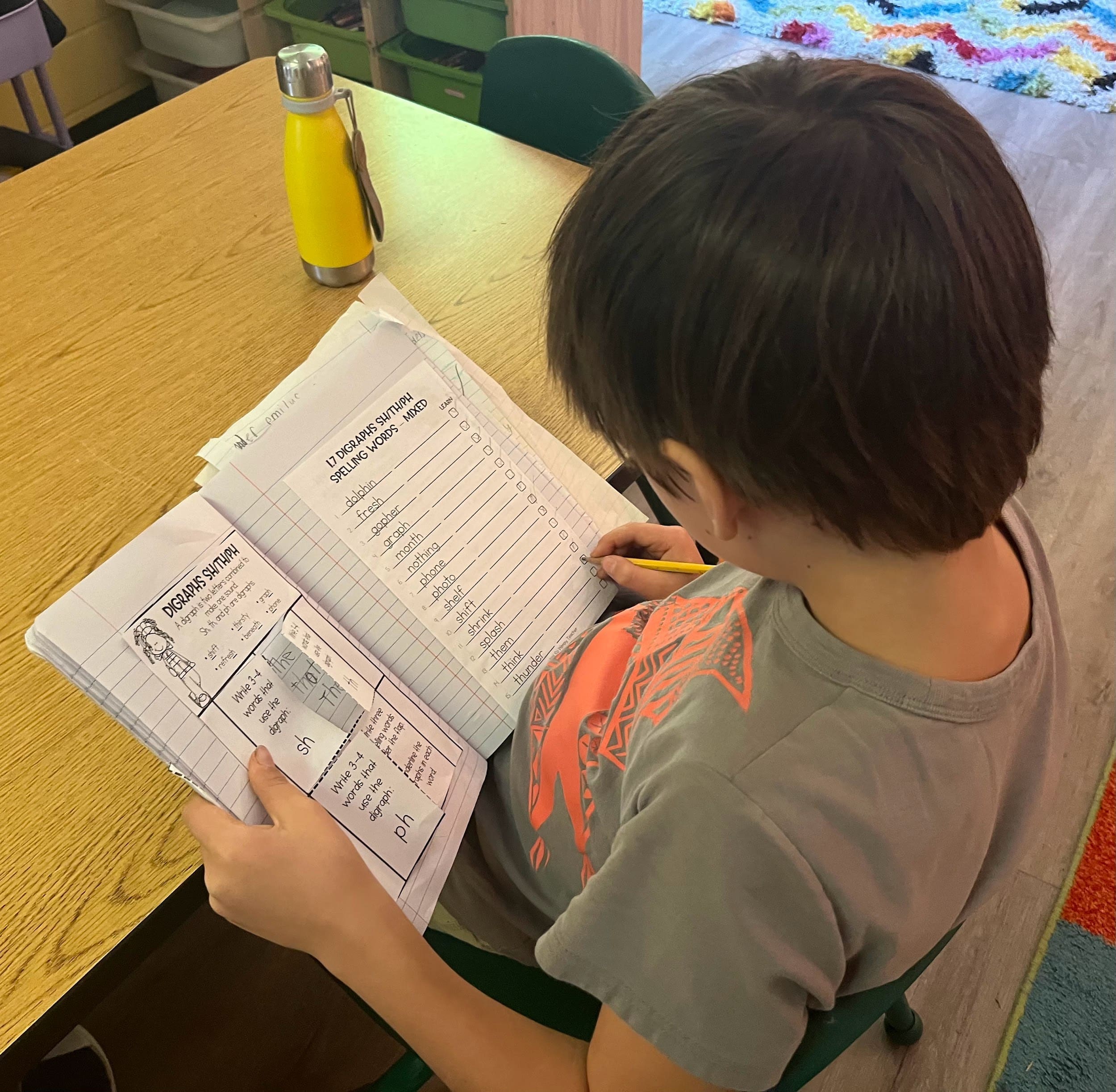 | 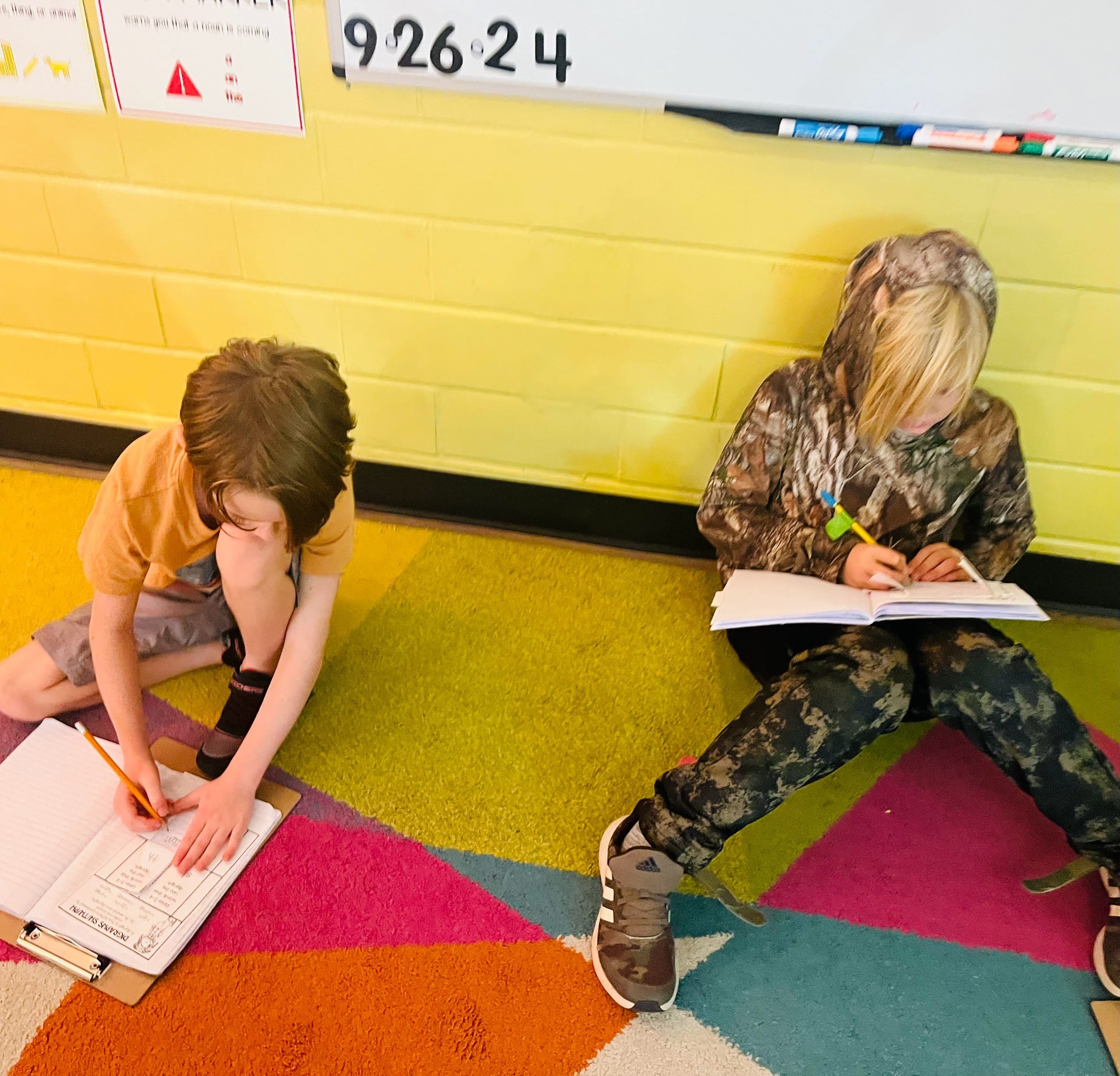 |
|---|
Writing –
We began the week partnering up to read our personal narratives to one another. With the help of some special reading glasses (wink, wink), a partner and a revision checklist, each student reread their writing several times to carefully ensure that the work contained all of the important elements that we learned about this quarter. Once revisions were complete, we started on the final drafts! We took our time, being sure to showcase the fabulous handwriting that we’ve been practicing all quarter. Still, there are so many things to remember! Indenting, finger spaces, punctuation – the list goes on! Our Betas demonstrated grit as they charged forward. Many kids are complete, and the others are so close! Adding an appropriate title and illustration to go along with it comes next. We will take Monday to wrap it up before we share our stories with the class!
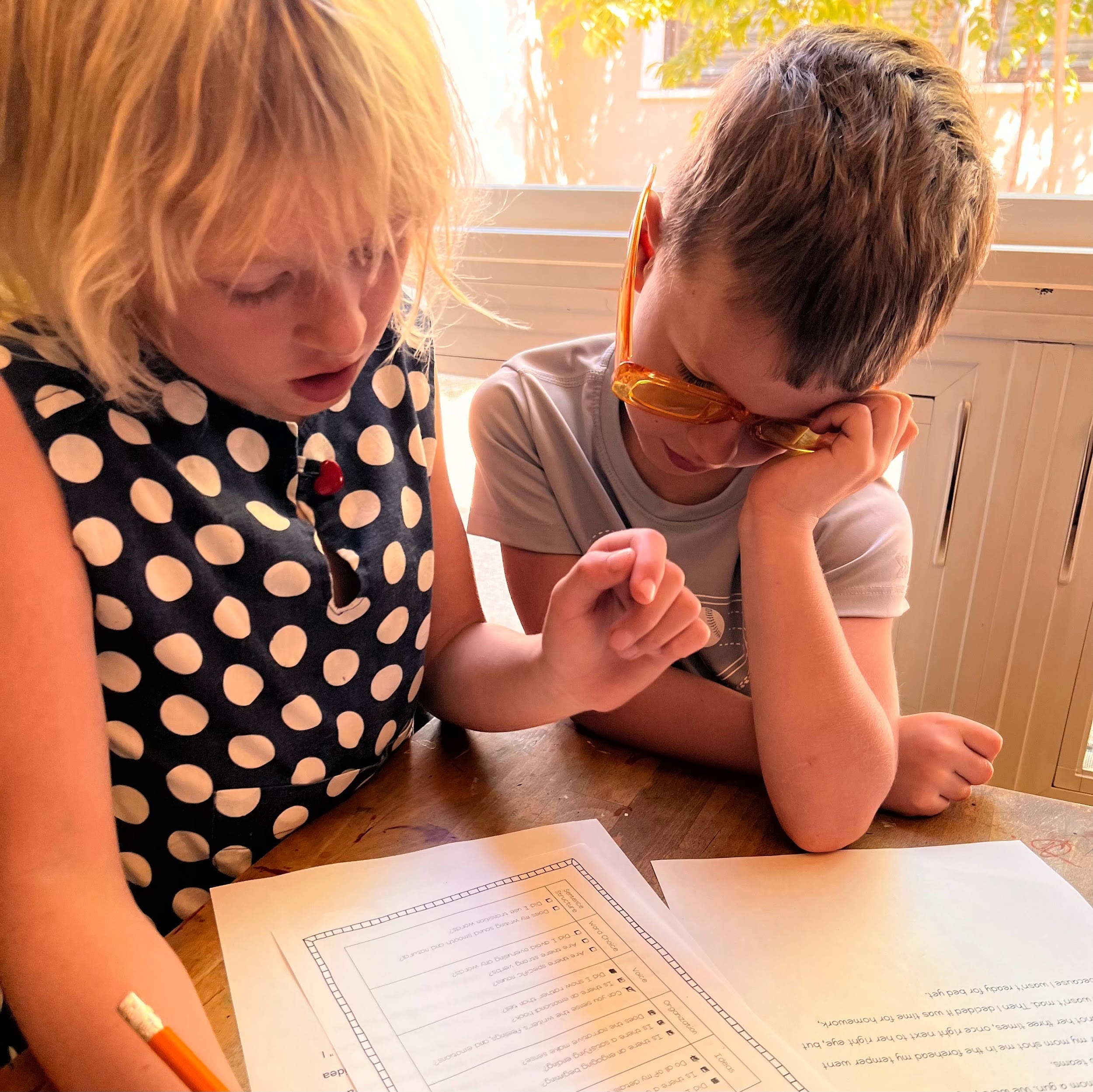 | 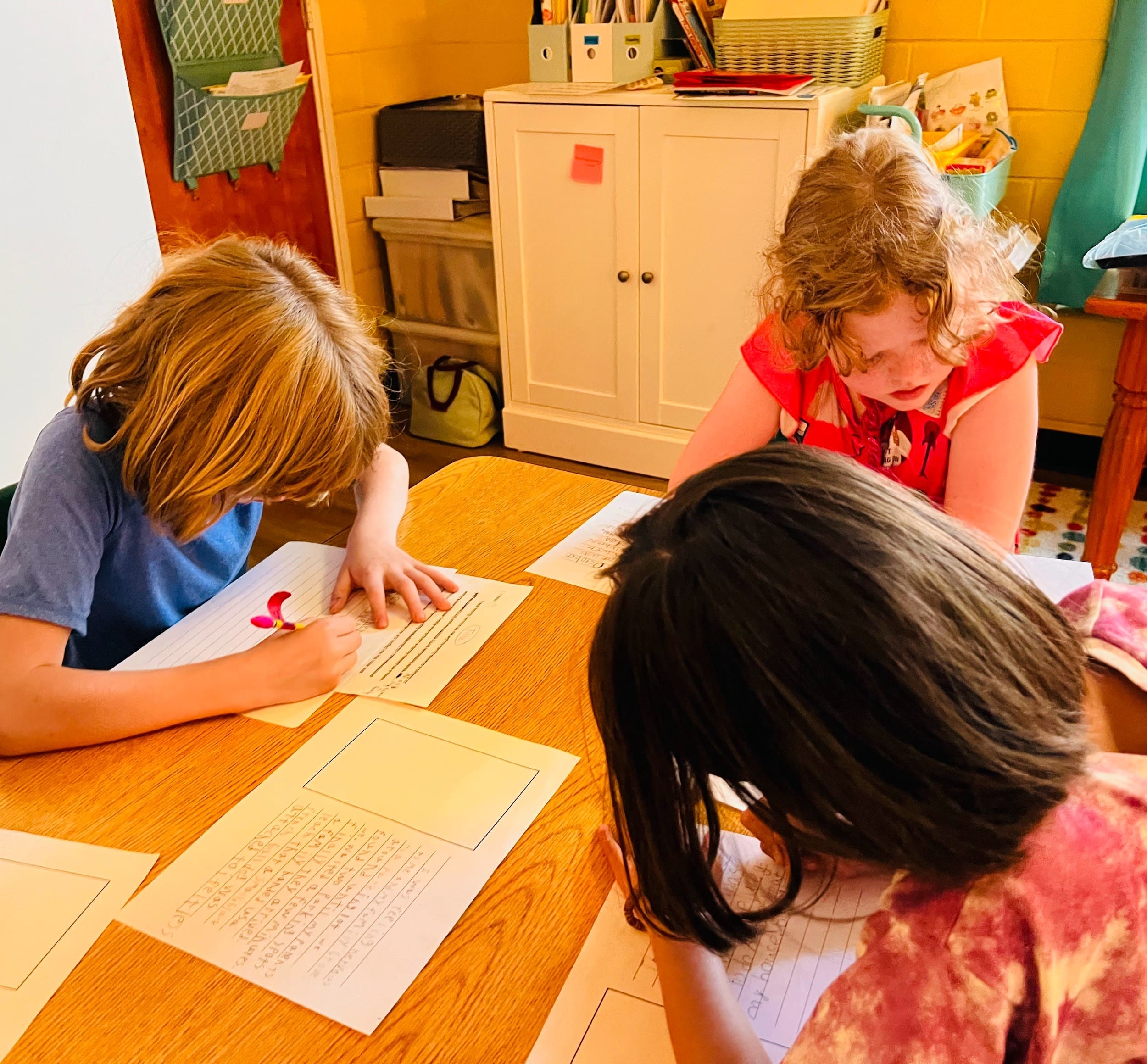 | 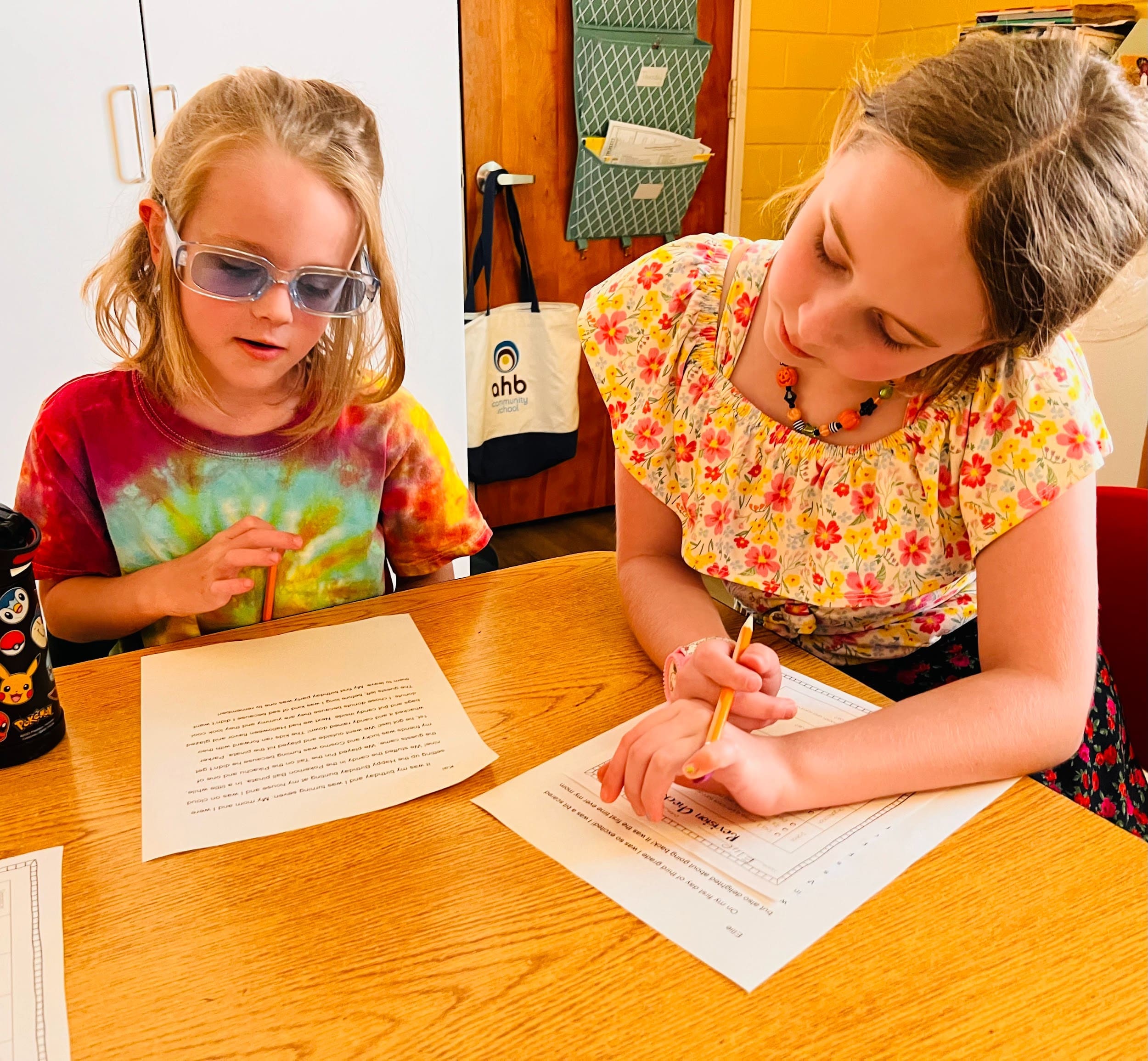 |
|---|
Theme –
This week we built a homopolar motor. A homopolar motor is a type of electric motor. Specifically, it is one that uses direct current to power rotational movement, such as that generated by a battery. It was the first type ever built and demonstrated by Michael Faraday in 1821. We used a AA battery, a few tiny neodymium magnets and copper wire. We twisted our copper wire to make a little nub to sit atop the battery, attached the magnets to the bottom, and bent our copper wire just so so it ended near the magnets.
The energy from the battery then travels in one direction (DC- direct current) from one end of the battery, to the other end. The copper wire, which conducts electricity, is made into a shape that connects the two ends of the battery, creating a continuous flow of electricity. The current travels through the copper wire back to the battery to complete the circuit.
The magnets in this experiment also have a positive end and a negative end creating a magnetic force that moves up towards the battery. This electromagnetic opposing force causes an outward motion, forcing the wire to spin in a circular motion. Once the kiddos got them spinning, they added a cute little paper topper to pizzazz it up!
We also created our own “Wooly Willy”. We made our own characters, added our own metal filings and BOOM 💥we have ourselves a fun little toy!
We ended the week making some “illuminated” art! With a mix of oil and chalk pastels and a little magic touch, we turned paper bulbs into glowing awesomeness! Our glowing paper lightbulb art is gorgeous y’all! These Beta artists really shine! ✨
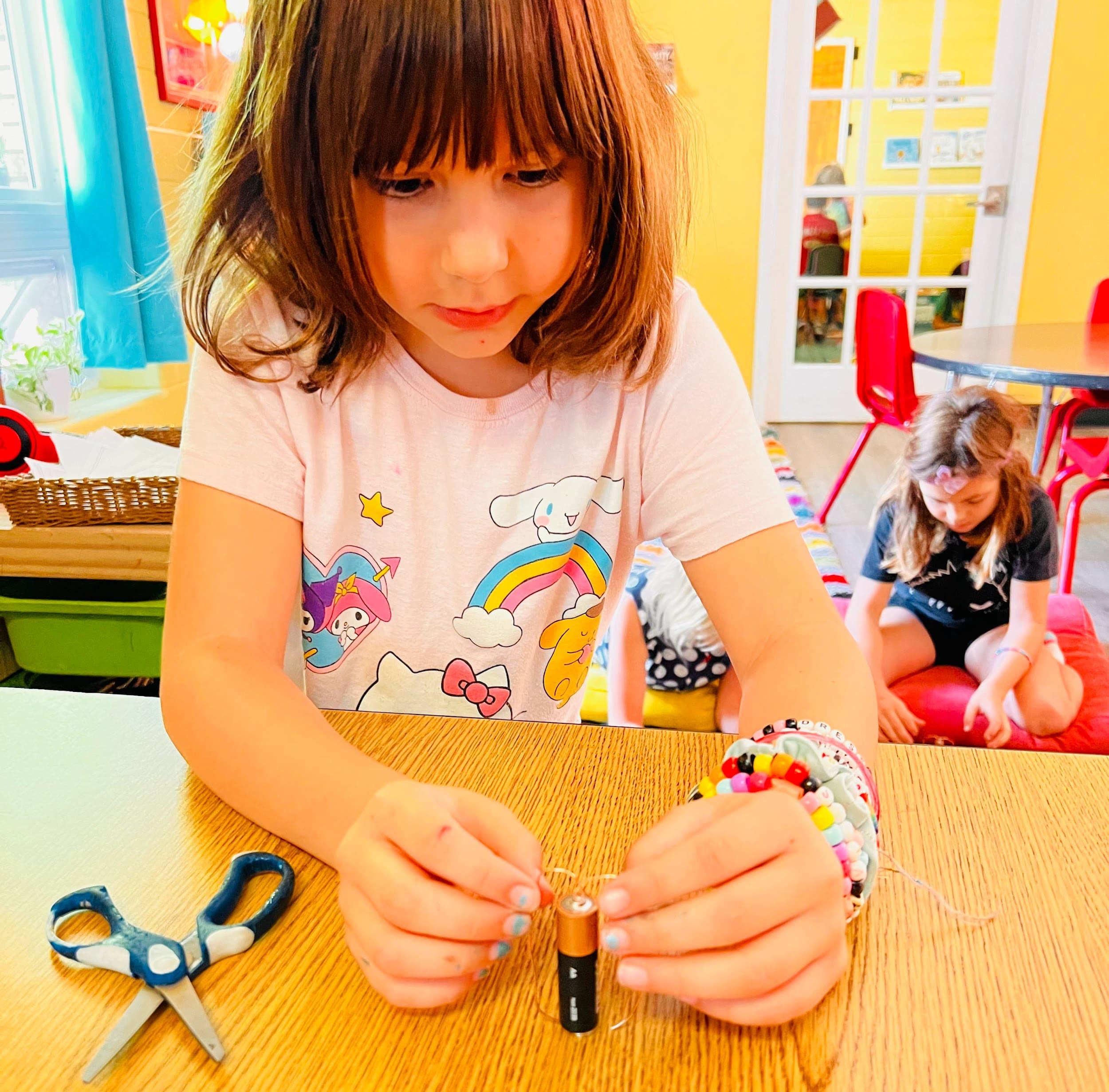 | 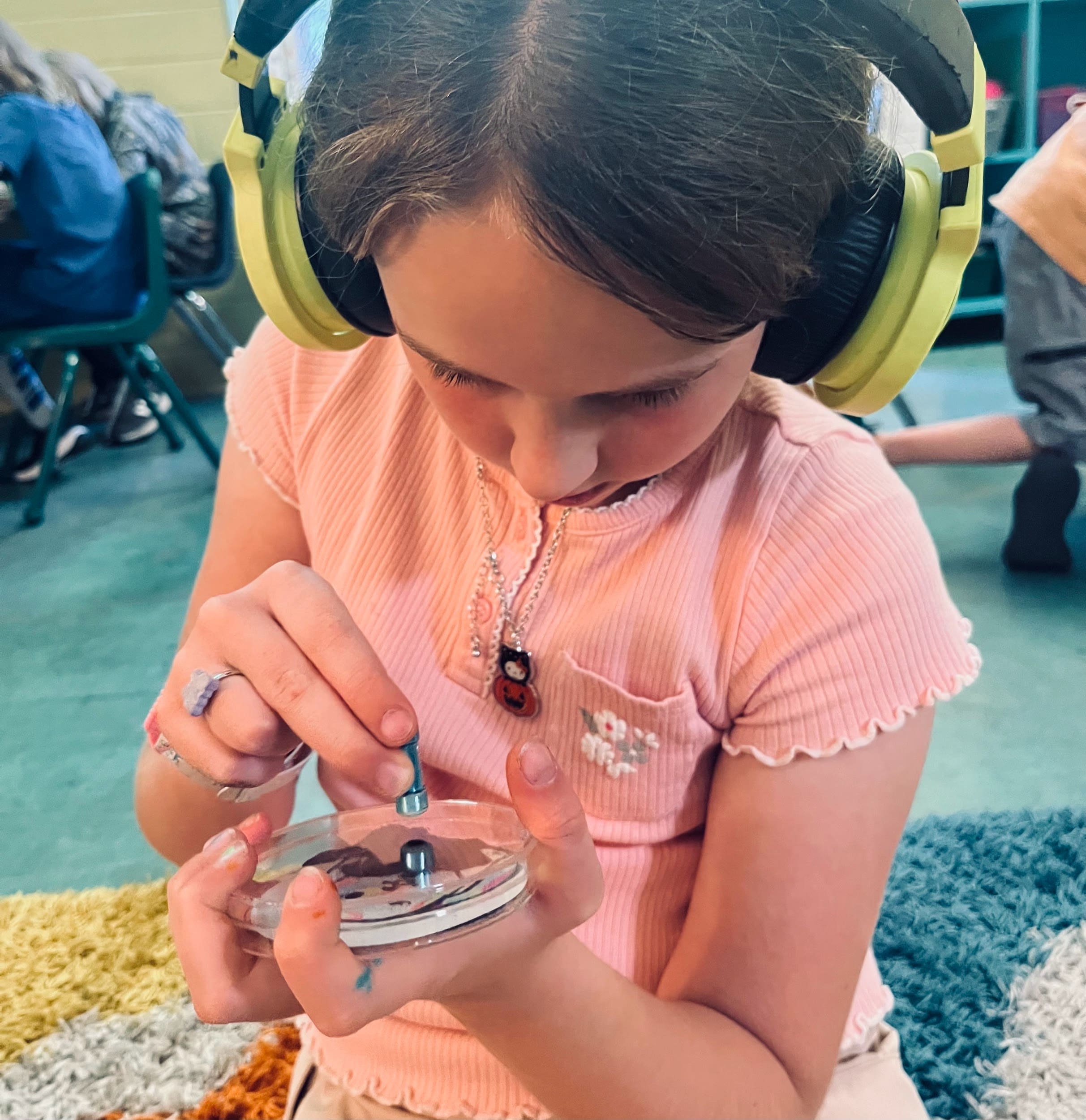 | 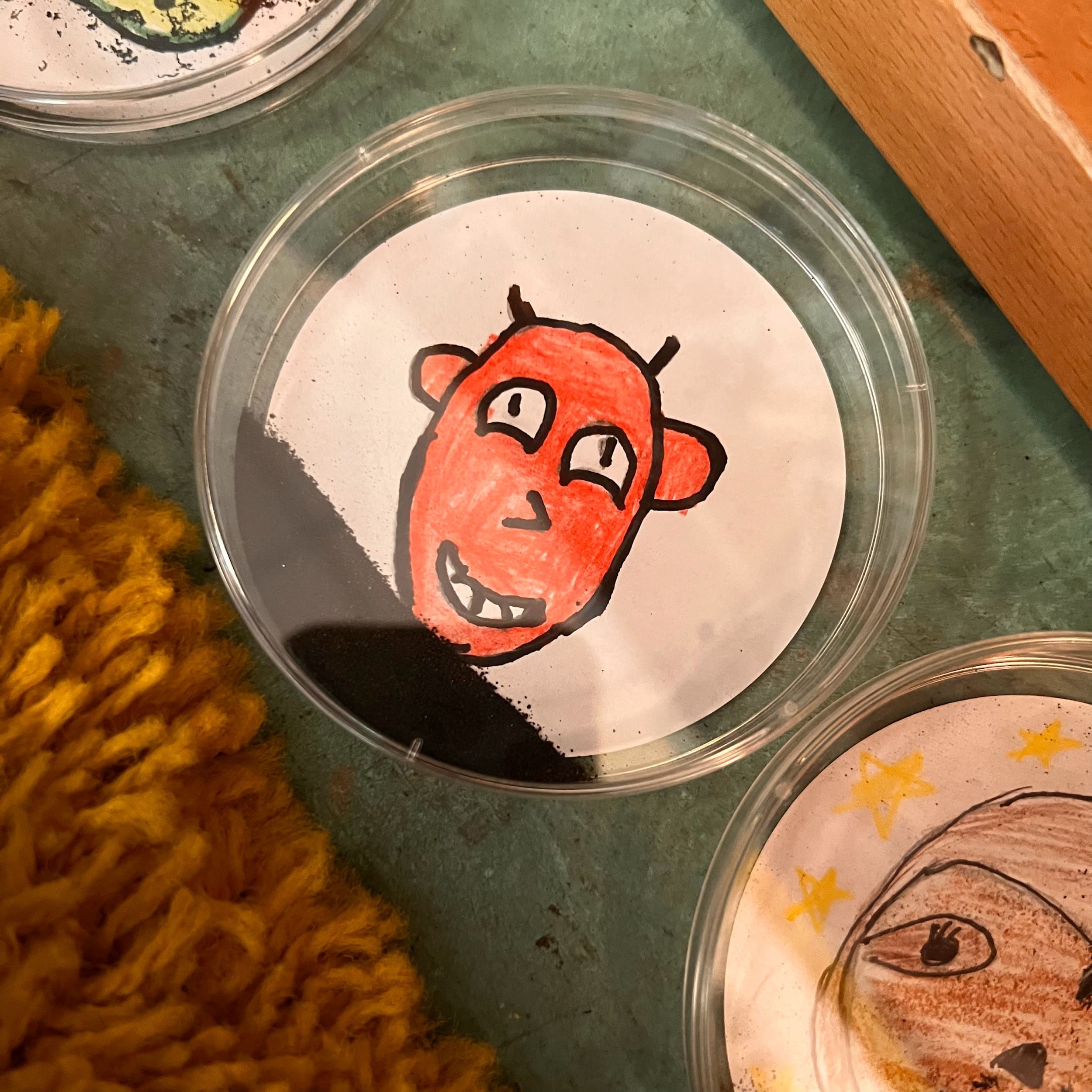 |
|---|---|---|
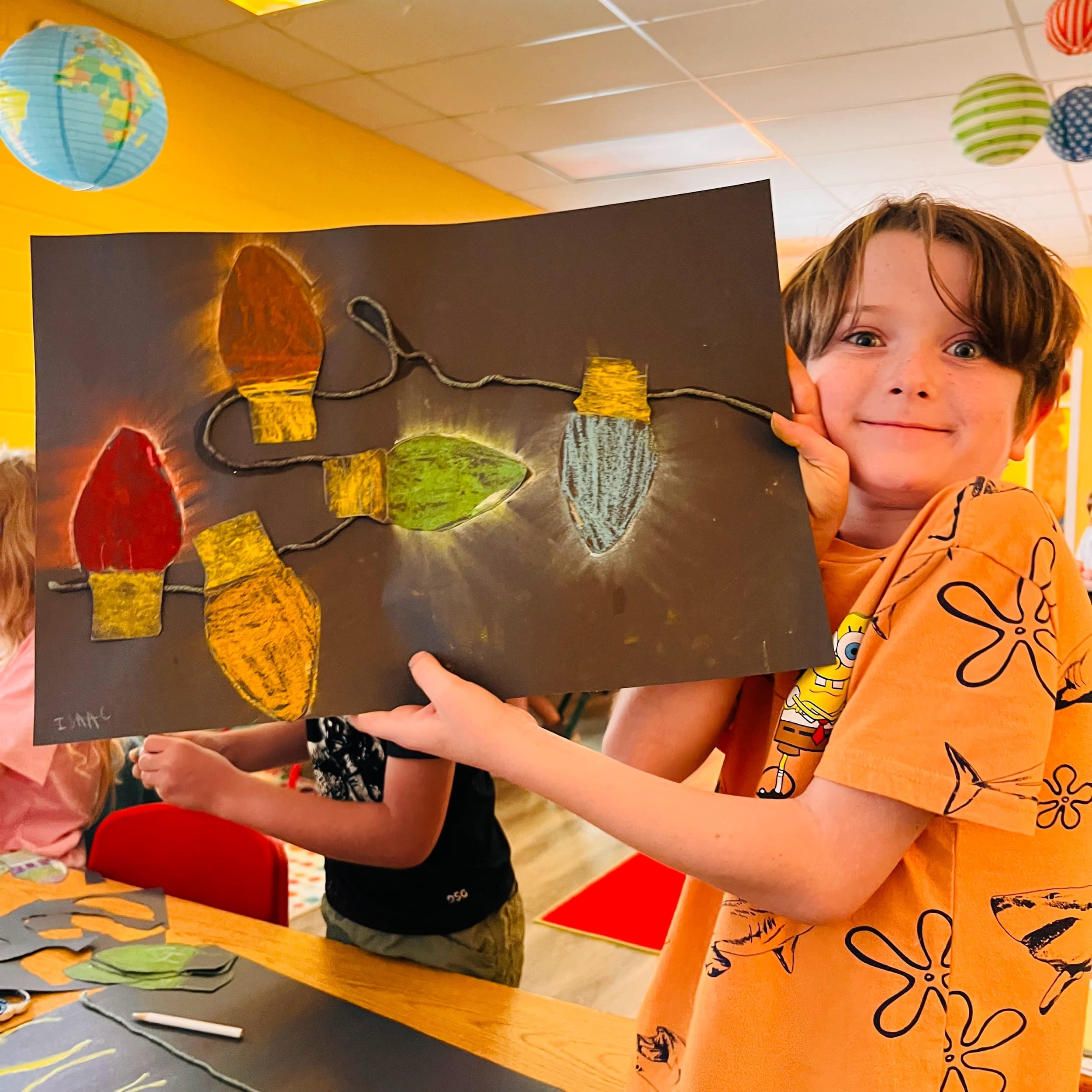 |  | 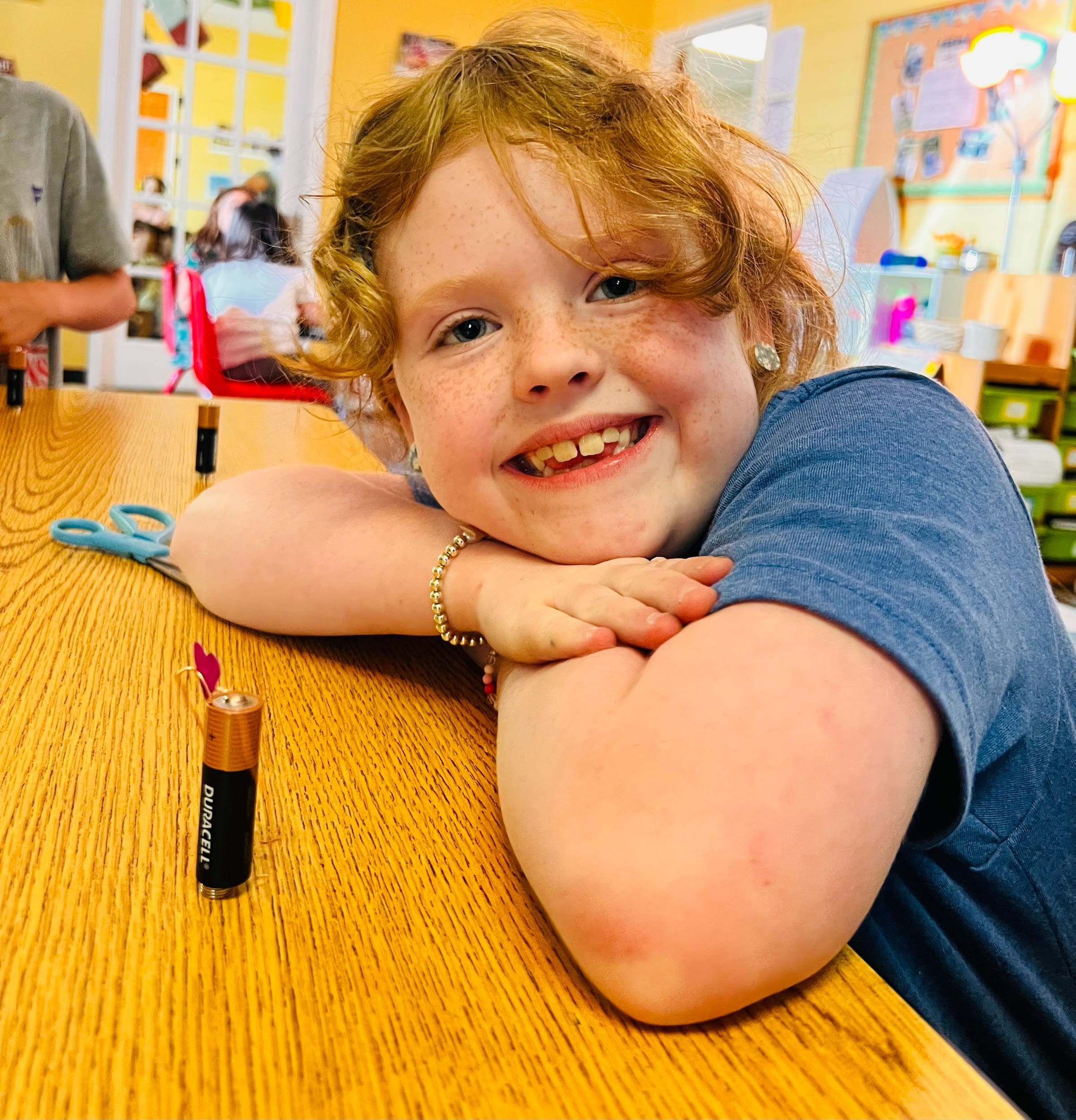 |
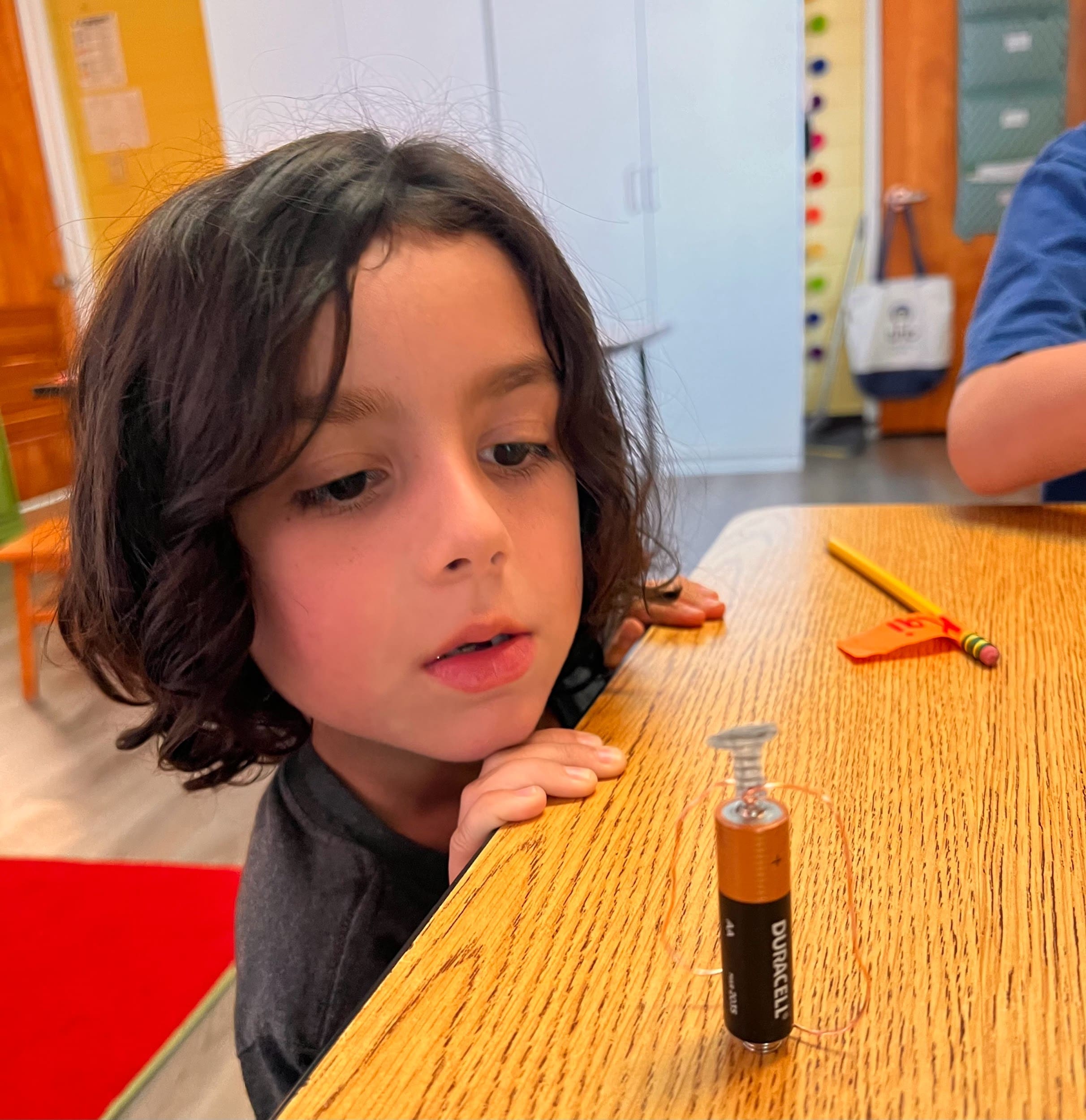 |

